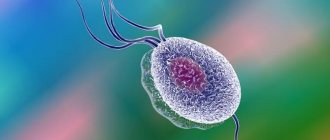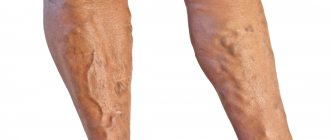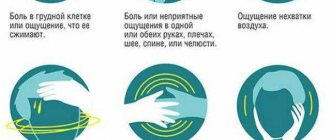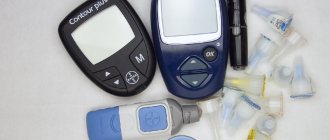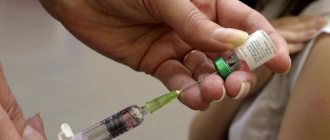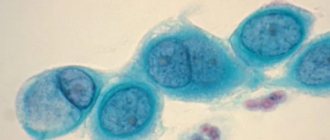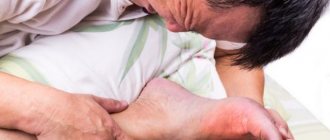- general characteristics
- Causes
- Symptoms of a microinfarction
- Diagnostics
- Treatment
- Rehabilitation activities
- Forecast
A microinfarction is characterized by small-focal damage to the myocardium of the heart or brain. With a normal heart attack, large foci appear, that is, the difference lies only in the size of the affected tissue. Many people do not even suspect that they have suffered a micro-infarction, as it manifests itself with mild symptoms.
general characteristics
Microinfarctions occur due to impaired blood supply to the heart or brain; accordingly, there is a cerebral microinfarction or myocardial microinfarction. As a result of weakened blood circulation, oxygen starvation occurs, which further affects the blood vessels. This leads not only to lack of nutrition, but also to poisoning with metabolite substances, against the background of which the structure of the blood fluid changes. Although only small areas of the myocardium or brain are damaged, death occurs in many cases (up to 40%).
Classification of microinfarctions, depending on the stage of development:
- The first stage refers to the most acute period, during which there is a narrowing of the lumen in the walls of blood vessels by almost 70%. Most often it is called ischemia. The duration of development is long.
- The second stage is characterized by an acute period during which necrobiosis occurs, that is, tissue death in the heart or brain. Lasts from 4 to 8 hours.
- The third stage is subacute. Due to necrosis, the entire area dies. This period is characterized by the presence of obvious symptoms: pain and high body temperature.
- Stage four: tissue scarring occurs, that is, connective tissue forms in place of dead cells, which leads to a rough scar. Duration – up to 2 months.
Main forms of microinfarction:
- The asthmatic form is characterized by symptoms that are characteristic of diseases of the respiratory system. This is precisely what makes it impossible to diagnose it in a timely manner. The main symptom is severe shortness of breath and suffocation.
- Gastralgic or abdominal form. The signs are similar to those of stomach diseases - the pain radiates to the gastrointestinal tract, the patient feels nauseous. In addition, vomiting and stool upset may occur. This also does not make it possible to detect a microinfarction at the beginning of development.
- The arrhythmic form is considered the most obvious, since all the signs of heart disease are present.
- Cerebral – the brain is affected, resulting in corresponding symptoms: headache, reflex disorder.
- Atypical form - the cause of its occurrence is unknown, the symptoms are very diverse. The main symptom is pain in the sternum.
How it manifests itself
Symptoms of a microinfarction, if they occur, you should immediately consult a doctor, are as follows:
- burning, excruciating pain in the chest area, radiating to the back, shoulder blade, arm, stomach, etc.;
- profuse cold sweat;
- increased weakness in the body;
- anxiety, fear of death;
- coldness of the fingers.
With a developed microinfarction, body temperature can rise to 38°C. A heart attack that has occurred will be indicated by a Nitroglycerin tablet taken under the tongue that previously had no proper effect.
It is worth considering the signs of a microinfarction of atypical development, reminiscent of other pathological conditions, often not similar to ischemic heart disease:
- in the asthmatic form, severe shortness of breath, pulmonary edema, and the occurrence of cardiac asthma are observed, pain syndrome is not typical;
- in the cerebral form, dizziness, headache, sensory and motor disturbances, and facial numbness are noted;
- in the abdominal form, dyspeptic syndrome, severe pain in the epigastric zone, and clinical manifestations of an “acute abdomen” are noted;
- in the arrhythmic form of the disease, irregular heart rhythms, chest pain, and arterial hypotension are recorded.
Important information: What causes stroke at a young age and its symptoms
Sometimes, with a microinfarction, symptoms do not appear. A person finds out about this by chance, when receiving the results of an electrocardiogram. These forms of the disease can lead to incorrect diagnoses and irreversible consequences.
In men
Symptoms of microinfarction in men differ in their pronounced manifestation. These include the following:
- persistent squeezing pain in the chest;
- blue discoloration of the nasolabial triangle;
- the presence of a lump in the throat;
- difficulty breathing;
- increased body temperature;
- panic fears;
- inability to feel the pulse.
There is practically no asymptomatic course of a male heart attack, which is associated with a low risk of developing severe consequences and complications.
The initial signs of microinfarction in men are:
- the appearance of shortness of breath with little stress on the body;
- frequent increase in blood pressure;
- intense headaches;
- pins and needles sensation on the skin of the extremities.
If you suspect symptoms of a mini-heart attack, you should consult a cardiologist for a full examination.
Among women
Symptoms of heart disease in women often have a hidden clinical picture. Atypical forms of this pathology are often common.
Signs of a microinfarction in women include:
- pain of moderate intensity in the epigastric zone;
- constant nausea;
- increased blood pressure;
- swelling of the legs and arms;
- weakness;
- headache.
Women do not pay attention to the first signs of a heart attack. They are often misdiagnosed. The pain symptom of microinfarction in women is often not expressed or completely absent.
Causes
The main cause of microinfarction is impaired blood supply. This can lead to:
- atherosclerosis;
- thrombosis in the coronary vessels;
- hypercholesterolemia;
- pathological disorders in the vessels located directly in the affected organs;
- angina pectoris, tachycardia, arrhythmia;
- arterial hypertension;
- diabetes;
- some heart and brain diseases;
- high degree of aggregation and adhesion of platelet units of blood fluid.
Factors influencing the development of microinfarction:
- Tobacco smoking and alcohol abuse, poor diet. In these cases, the coronary vessels are affected, in which toxic and cholesterol products are deposited, which, when accumulated, narrow the lumen.
- Mental and physical overload. When this happens, the heart and brain spend more energy, therefore, oxygen needs to be consumed in larger quantities. If there is not enough of it, it affects the circulatory system.
- Stressful situations, worries, worries, fears, fears. All these factors lead to spasms in healthy coronary arteries.
Most often, men suffer from microinfarction. There are two reasons: they are more likely to abuse alcohol and smoke; Women have hormones that put up a protective barrier.
Consequences
Microinfarction with timely diagnosis and proper treatment has a relatively favorable prognosis. The resulting focus of necrosis does not undergo reverse development - after a heart attack, a scar remains on the myocardial tissue.
However, a balanced diet, adequate drug therapy and dosed physical activity help the patient quickly go through the recovery period and return to an active lifestyle.
After a microinfarction, no significant restrictions are imposed on the patient - excessive physical activity and nervous stress are prohibited, and doctors strongly recommend quitting smoking. Regular examinations with a cardiologist and continuous or course drug therapy will be necessary.
okardio.com
The consequences of a microinfarction are determined by the localization of the damage zone and the readiness of non-thrombosed vessels to take over the nutrition of the additional area. The severity of complications is due to repeated scars that replace normal myocardial tissue and prevent heart contraction.
The consequences of a microinfarction are very serious, the main ones being increased heart failure, arrhythmia, pericarditis, extensive cardiac microinfarction and even rupture.
Therefore, when the first signs and symptoms of the disease appear, it is imperative to consult a doctor, and it is also necessary to conduct regular examinations with a cardiologist, especially if you have various heart diseases, diabetes and hypertension.
The main thing is to recognize a mini-heart attack in time and undergo therapy to avoid a large one, which often follows a small one after some time. You may not be too worried about the micro-infarction you suffer while on the run, but an echocardiogram will definitely show that it happened. At the same time, the risk of 2 micro-infarctions remains, or that the heart is extensively affected. You urgently need treatment.
Seizures have consequences. There will be problems in the heart. Arrhythmia and pericarditis will intensify, then there may be a massive heart attack and even a sudden rupture of the “motor”. Therefore, if you suspect heart problems, immediately consult a doctor and get examined.
How severe will a microinfarction be? This is influenced by various factors:
- Which area is affected;
- How old are you;
- What else are you sick with?
It happens that a missed microinfarction is worse than a large one. Its consequences:
- Second or already extensive organ damage;
- The appearance of a blood clot in a vessel;
- Heart failure;
- Arrhythmia.
Do you want to reduce the risk of micro-infarction? Follow the rules:
- Try to move more. Do exercises, do as much exercise as you can, or at least walk your dog regularly in the fresh air.
- When drinking socially, do not smoke. Fight other bad habits too.
- Go to medical examination as necessary.
- After 40, examine your heart. If you have problems, start taking medications prescribed by your doctor that will support your heart muscle.
With proper treatment and following the doctor’s recommendations, the functioning of the heart muscle can be restored. The disease is often confused with a cold, leaving it without proper treatment.
The attack suffered is dangerous because it has virtually no effect on the patient’s well-being. After a while, an electrocardiogram will show changes in the myocardium, indicating the development of atrophy.
If damage to a small area of the heart is left unattended, it will grow. The first attack may pass without consequences, but subsequent outbreaks of the disease always turn out to be more dangerous. Degenerative processes culminate in an extensive infarction of the heart muscle, when necrosis affects the entire myocardium, causing the person to die.
If treatment is carried out in full, the functionality of the heart can be restored. But it is important to recognize a microinfarction in time. This does not always work out, because the symptoms often resemble a cold. There may be no acute pain, and the discomfort is attributed to a slight malaise.
Primary microinfarction most often affects the heart rhythm. Subsequent attacks always occur with significant complications.
Therefore, after the first mini-heart attack, it is necessary to undergo rehabilitation. The doctor must monitor the recovery process. It is necessary to completely adjust your lifestyle, choose a diet, and think through a set of therapeutic exercises.
An attack may be indicated by severe headaches, chills, arterial hypertension, increased sweating, pain in the joints, and swelling of the extremities.
Having a heart attack once significantly increases the risk of having another attack in the future. Other consequences of a mini-heart attack include the development of arrhythmia, pericarditis, and worsening heart failure.
Having a heart attack once significantly increases the risk of having another attack in the future.
Symptoms of a microinfarction
The primary signs of a microinfarction are quite scanty. They are especially impossible to notice for people who already have any heart pathologies.
The clinical picture has a number of features:
- Pain syndrome. In each individual case it has a different character, it can be cutting, sharp, aching, pressing, burning. The main location of pain is the area of the heart, sternum, and shoulder blades. It can radiate to the stomach, lungs, neck, upper limbs, jaws.
- Severe cold sweating.
- Weakness, poor health.
- Average high body temperature, no more than 38 degrees.
- Dizziness and increased heart rate.
- Feeling of fear and anxiety for your own life.
If you take a nitroglycerin tablet under the tongue, the symptoms will not disappear. Therefore, this action also refers to a symptom.
Prevention methods
The main methods of preventing microinfarction include an annual medical examination and a cardiogram twice a year. This is especially true for people who are at risk for pathology.
To prevent microinfarction, you must adhere to the following rules:
- Eliminate all bad habits (alcohol abuse, drugs and smoking)
- Closely monitor your blood pressure and help normalize it
- Avoid significant weight gain
- Control cholesterol levels in the body
- Exercise daily
- Eat right and rationally
- Alternate work with rest
- Avoid stressful situations
- Be less nervous, irritated and anxious for no reason
After experiencing a microinfarction, the patient needs to think about prophylaxis of the cardiac organ in order to prevent a recurrence of a heart attack, which can be large-focal.
Important preventive measures:
- Timely adjustment of the diet - do not eat foods with a high calorie index. Eliminate sour and salty foods from the diet, and also do not use the method of frying foods for cooking;
- Eat more fresh herbs, vegetables and fruits;
- Adhere to a healthy lifestyle - engage in therapeutic physical exercise, the load on the body should be moderate and depend on the patient’s well-being;
- Follow the prescribed rehabilitation therapy regimen by the treating doctor;
- Avoid stressful situations.
It is important that a person who has suffered a heart attack takes care of his health independently and is constantly in a good mood.
Each person is responsible for their own health. It is especially important to prevent heart disease for people who are overweight, have a history of persistent arterial hypertension, and smokers.
The following measures can be suggested to prevent microinfarctions and cardiovascular diseases:
- Stop smoking immediately.
- Reduce the amount of alcohol consumed.
- Do not take drugs or psychostimulants.
- Control the caloric content of food.
- Eat fruits and vegetables daily.
- Be sure to exercise daily. The most preferred types of exercise are swimming, running, and fast walking. It is better to exercise regularly, but not to the point of exhaustion. There is no need to wear out the heart muscle unnecessarily. But physical inactivity is also unacceptable. Physical activity should be enjoyable - it could be outdoor games, skating or skiing. It is especially pleasant to play sports in good company with friends or family. This will serve as great motivation.
- Monitor your body weight. If you are obese, you need to fight excess weight. You need to burn more calories than you consume. A low-calorie diet and exercise are required. Include lean chicken meat, leafy vegetables, and citrus fruits in your diet. Flour and sweets should be completely excluded.
- Control your blood pressure. If it is consistently elevated, you should take medications that reduce it.
- Control cholesterol and blood sugar levels. For high cholesterol levels, it is recommended to take special medications - statins, which reduce the level of bad cholesterol and maintain normal levels.
It is important to overcome your own laziness, pull yourself together and start working on improving your body’s health. Good physical shape makes a person strong, resilient and stress-resistant, which is the best prevention of myocardial infarction.
With timely diagnosis and properly selected treatment, the prognosis is relatively favorable. After treatment and rehabilitation, a person can return to work and normal life. Patients who have suffered any form of heart attack need regular examination by a cardiologist.
Treatment
First aid
If you suspect you are having a micro-infarction, you urgently need to take a horizontal position and open all the windows so that the room is quickly filled with fresh air. Next, you need to take an Aspirin tablet, but it is advisable not to swallow it whole, but to chew it. This way it will work faster. Be sure to measure your blood pressure. If it is elevated, you need to put Nitroglycerin under your tongue; if it is low, you cannot use this drug. Call an ambulance.
Drug therapy
In case of a microinfarction, the patient is hospitalized. The doctor prescribes a number of medications:
- Fibrinolytic agent – “Tenecteplase”. This is an injection solution that is administered slowly intravenously. The dosage is selected by the cardiologist, as it depends on the person’s weight. The drug restores impaired blood circulation in the affected organ (heart, brain).
- Heparin drugs prevent the formation of blood clots, which can be caused by a microinfarction. An injection solution is also used.
- To restore cardiac function.
- The statin group is prescribed to eliminate atherosclerosis and remove cholesterol from the body. These are the drugs Liptonorm, Simvastatin, Crestor.
- A group of b-blockers lowers blood pressure and eliminates tachycardia attacks. There are three generations of drugs, among which the most effective are Sotalex, Anaprilin, Celipres, Betalok, Recardium, Atenobene, Glukomol, Nebilet.
- To relieve pain, nitro drugs are used: “Nitroglycerin”, “Isoket”, “Efox”, “Kardix-mono”, “Olicard”.
- Antiplatelet drugs thin the blood fluid, restore clotting, and prevent the formation of blood clots: Aspirin, Cardiomagnyl, Doxy-chem.
- ACE inhibitors are required - they lower blood pressure and support the circulatory system: Enalapril, Ramipril, Benazepril, Captopril, Perindopril.
- If the heart muscle is affected, angiotensin receptor blockers are used: Losartan, Volsartan, Olmesartan.
Additionally, diuretics and other groups of medications are used, depending on the degree of damage, cause and course of the disease. The dosage and duration of courses of taking each drug are determined by the doctor.
Surgical intervention
Surgery is used if drug therapy does not give the desired result. The operation will avoid relapses.
There are two types of surgery:
- stenting: a kind of ring is installed in the affected vessel, which makes it impossible to block the lumen;
- bypass: an auxiliary path for blood flow is established, and the affected one is blocked by cauterization.
Physiotherapy
After the patient begins to get up and walk, he is referred to physiotherapeutic procedures (electrophoresis, etc.).
What to do in case of an attack
At the first sign of a problem, you should call an ambulance. Before her arrival you must:
- lie down or take a semi-sitting position;
- get rid of constrictive clothing and provide a flow of fresh air;
- apply a cool compress to your forehead and wipe your face with a damp cloth;
- take a Nitroglycerin tablet. It is placed under the tongue. This is the only drug that can be given to a patient during an attack of a microinfarction before the doctors arrive.
Also read: Features of right ventricular myocardial infarction
Further procedures are carried out by emergency physicians.
Rehabilitation activities
Rehabilitation begins in the hospital. Initially, the patient begins to move the arms, eyes and upper body in a supine position, as bed rest is indicated. After about 5-8 days, the patient can slowly get up and move around.
After a person is discharged from the clinic, he should go to a specialized medical and recreational facility for further recovery.
Rehabilitation includes the following activities:
- Physical therapy under the strict supervision of an instructor. The loads are initially minimal, but over time they gradually increase. An individual complex is developed for each patient. After completing rehabilitation in a sanatorium, the patient will have to do the same gymnastics at home for a long period of time. Swimming, massage and an exercise bike help very well.
- The patient must follow the diet prescribed by the doctor after discharge from the hospital. Basically this is diabetic table number 10.
- A person should completely eliminate the consumption of alcoholic beverages and quit smoking.
- Every day you will have to take walks in the fresh air. Every day the instructor will add a few meters. As a result, a person will be able to easily walk 2 or more kilometers.
- During the rehabilitation period, drug therapy is not canceled. Unfortunately, the patient will be forced to take medications for quite some time, but this will ensure a full recovery. These are mainly statin and thrombolytic drugs.
Diagnosis and treatment of the disease, prevention of microinfarction
Diagnosing microinfarction in women is very difficult, since it does not have specific symptoms.
Changes in the heart muscle can only be seen using instrumental research methods, among which it is worth mentioning:
- An electrocardiogram, which allows you to detect ischemic changes in the myocardium.
- Ultrasound examination of the heart, with which you can determine the exact size of the source of the disease and its exact location.
It is also necessary to use a general and biochemical blood test, with the help of which markers of microinfarction can be detected, but only after the development of the disease.
Cardiovascular insufficiency can be identified by blue discoloration of the nasolabial triangle at an early stage of the disease.
The effectiveness of treatment is determined by the quality of first aid provided to the patient.
Everyone should know the method of providing pre-hospital medical care, since a microinfarction can catch a person anywhere:
- to begin with, the patient must be laid or seated so that her body has a strong support;
- it is necessary to ensure immobility and emotional balance;
- the next step is to ensure access to fresh air for the patient;
- if aspirin or nitroglycerin is available, then you must give one tablet before the doctors arrive.
Knowing these points, you can save someone's life! Only specialists can treat this disease.
After the patient is admitted to the hospital with a diagnosis of microinfarction, treatment is as follows:
- providing bed rest, which greatly eases the load on the heart muscle;
- ensuring emotional peace;
- immediately after hospitalization, it is necessary to administer analgesics to relieve pain, and coronary lytics, which will dilate the patient’s blood vessels;
- Basically, treatment is accompanied by drug therapy;
- at a young age, surgical intervention is possible, since it will not pose such a danger as for older people.
Treatment of a microinfarction must be long-term and comprehensive in order to reduce the risk of relapses.
Prevention of the disease is not so difficult. You need to adhere to proper nutrition, exclude fatty and fried foods from your diet. You should avoid bad habits, since smoking increases the risk of disease several times. You should never worry too much, because stress is one of the main causes of micro-infarction. By following these simple rules, you will be more protected from the disease.
boleznikrovi.com
Forecast
If we talk about the prognosis, it largely depends on the timeliness of contacting the clinic, the adequacy of treatment and the patient’s attitude towards his own health. An important factor is the strict implementation of all rehabilitation measures. In this case, the outcome may be favorable.
If there was a micro-infarction, but the person suffered it on his feet, then the heart tissue is unlikely to recover fully. Then you will have to face complications and repeated heart attacks, which can lead to death.
You can learn more about what a microinfarction is from our video:
Microinfarction is a disease in which both death and a fairly favorable prognosis are possible. Much depends only on how responsibly each person treats his own health. Pay special attention to changes in your health and if you suspect a microinfarction, immediately call an ambulance.
What is a violation?
People who know what a microinfarction is do not take this concept lightly. It is important to realize that the prefix “micro” only denotes the extent of damage to the tissue of the heart muscle. However, this violation does not always indicate a relieved condition of the patient, since any heart attack is dangerous.
The only thing that distinguishes extensive cell death from a microinfarction is a more favorable prognosis for life. With timely and effective treatment, this pathology is completely eliminated, and the person can return to an active lifestyle if he follows the recommendations of the cardiologist.
Note! According to statistics, 200-300 Russian women die annually from extensive tissue death, which develops against the background of a microinfarction.

